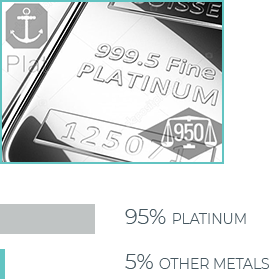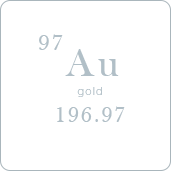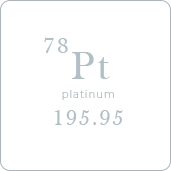
METAL

There are only two traditionally used for diamond jewelry - Gold and Platinum, among different kinds of precious metals. It doesn’t mean that silver, palladium, or tungsten alloys cannot be used for your diamond engagement ring, but traditionally we use to choose gold and platinum for this matter.
So, let’s start with gold.

The Gold. Gold is the most common metal used for jewelry. It comes in different colors and purities. Usually, you can meet 10, 14 karats or 18 karats gold stamp or “375”, “585” or “750” hallmark on the inner side of the ring. In a range of colors: white, rose, yellow, and red gold.
What does all this mean?

18 karat stamp means that alloy has 18 parts of gold and six parts of other metals, like palladium, zinc, silver, nickel, and copper (depends which color of gold we want to get – white, pink, yellow, or red). In other words, it means that the content of the gold is 75%, so in Europe, this gold alloy will be stamped as “750”. 18K is soft but durable enough to be used in jewelry. It’s perfect for the earrings. Some people are allergic to metal alloys, like zinc, nickel, etc.
As you know, gold is hypoallergic metal, so using 18K gold prevents getting an allergic reaction because of the low content of other metals in gold. 18K can be used for bracelets, but I would advise using 14K for this matter. Using 18K gold is not recommended for rings due to its softness. It can be used for rings that she wears not for every day, like a cocktail ring or unique design ring that needs a special dress to fit the style.

14 karat stamp means that alloy has 14 parts of gold and eight parts of metals. Or 58.5% of gold. So, as you understand, by European standard, it will be stamped “585”. It’s perfect for rings and bracelets due to Its strength. 14K gold is much more durable and harder than 18K. It can also be used for other jewelry, like earrings, pendants, brooches, etc. There are also 10, 15, 20, and 22 karat gold, but 14K and 18K are the most presented gold alloys on the market. So, we will not waste time on others. Anyway, the full information about it, you can find below if you scroll down the page.

Platinum, for its density, durability, and excellent oxidation resistance, is called the eternal metal. The natural white color of the Platinum never tarnishes. To look white, Platinum doesn't need to be plated with rhodium, like white gold, that was invented as an imitation of Platinum. Platinum never fades. It has chemical and acid-resistant. Due to its hardness, it's perfect for a diamond engagement ring and as hypo allergic metal – for earrings. It doesn't mean that Platinum is unscratchable, but it has high-level scratch resistance. The price of platinum jewelry is higher than similar golden jewelry.

If the first number is “900”, it means that it has 90% of Platinum and 10% of other metals in the alloy.

If the first number is “950,” it means that it has 95% of Platinum and 5% of other metals in the alloy.

Gold alloys.
24K – almost pure Gold of 99.999%. Jewelry use: Not used in jewelry. Too soft.
18K White gold – 75% Gold + 25% alloys mixture of Palladium, Nickel, Zink.
18K Yellow gold – 75% Gold + 25% alloys mixture of Silver, Copper, Zink.
18K Rose gold - 75% Gold + 25% alloys mixture of Copper, Silver.
18K Red gold – 75% Gold + 25% Copper.
14K White gold – 58.5% Gold + 41.5% alloys mixture of Palladium, Nickel, Zink.
14K Yellow gold – 58.5% Gold + 41.5% alloys mixture Silver, Copper, Zink.
14K Rose gold - 58.5% gold + 41.5% alloys mixture of Copper, Silver.
14K Red gold - 58.5% gold + 41.5% Copper.
10K White gold – 41.5% Gold + 58.5% alloys mixture of Palladium, Nickel, Zinc.
10K Yellow gold – 41.5% Gold + 58.5% alloys mixture Silver, Copper, Zink.
10K Rose gold - 41.5% gold + 58.5% alloys mixture of Copper, Silver.
10K Red gold - 41.5% gold + 58.5% Copper.
There are also very rare gold alloys: 22K – 91.6% gold 21K – 87.5% gold 20K – 83.3% gold 15K – 62.5% gold

Platinum alloys.
Pt950/Ru – 95% platinum +5% Ruthenium.
H: Hardest platinum alloy.
Tint: Gray.
-
Pt950/Co – 95% platinum + 5% Cobalt.
H: Softest platinum alloy.
Tint: Dark gray.
-
Pt950/Ir – 95% platinum + 5% Iridium.
H: Medium hardness alloy.
Tint: Whitest.
-
Pt900/Ir – 90% platinum + 5% Iridium.
H: Hard alloy.
Tint: White.

Gold 18 karat – soft, anti-allergic metal. Perfect for earrings and pendants, cocktail rings, brooches. I would not recommend for engagement rings, wedding bands, cufflinks, and bracelets.
Gold 14 karat – Perfect for engagement rings, wedding bands, pendants, cufflinks, and bracelets. It can be used for earrings, but this alloy is less anti-allergic than 18 karats.
Platinum - is perfect for engagement rings, wedding bands, bracelets, earrings, pendants, cufflinks, and brooches, due to its durability, hardness, and anti-allergic properties.
So, I hope these small secrets will help you make the right choice.
Learn more about diamonds




